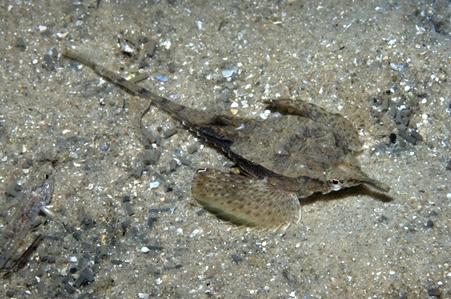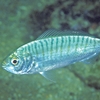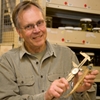General Description
Small bizarre-looking well-camouflaged fishes with bodies encased in bony armour. Body broad, flattened, with a long slender bony rostrum overhanging a tiny mouth, a long slender flexible tail tipped with a tiny caudal fin and large fan-like pectoral fins. Colour pattern highly variable to match surroundings, usually sandy coloured, often with darker markings along the sides. Males have pectoral fins with a small patterned patch on the rear of the fin that is used for display. To 12 cm.
Biology
Rather than swim, seamoths use their pectoral and pelvic fins to crawl over the bottom in search of food.
Habitat
Bays, estuaries and sheltered coastal areas, on sandy, silty or shelly bottoms, often near seagrass beds, in depths of 0-55 m.
Soft substrates
Seagrass meadows
Distribution guide
Southern Australia.
Species Group
Depth
Shore (0-1 m)
Shallow (1-30 m)
Deep ( > 30 m)
Water Column
Max Size
12 cm
Commercial Species
No
Global Dispersal
Native to Australia
Conservation Status
- DSE Advisory List : Not Listed
- EPBC Act 1999 : Not Listed
- IUCN Red List : Data Deficient







